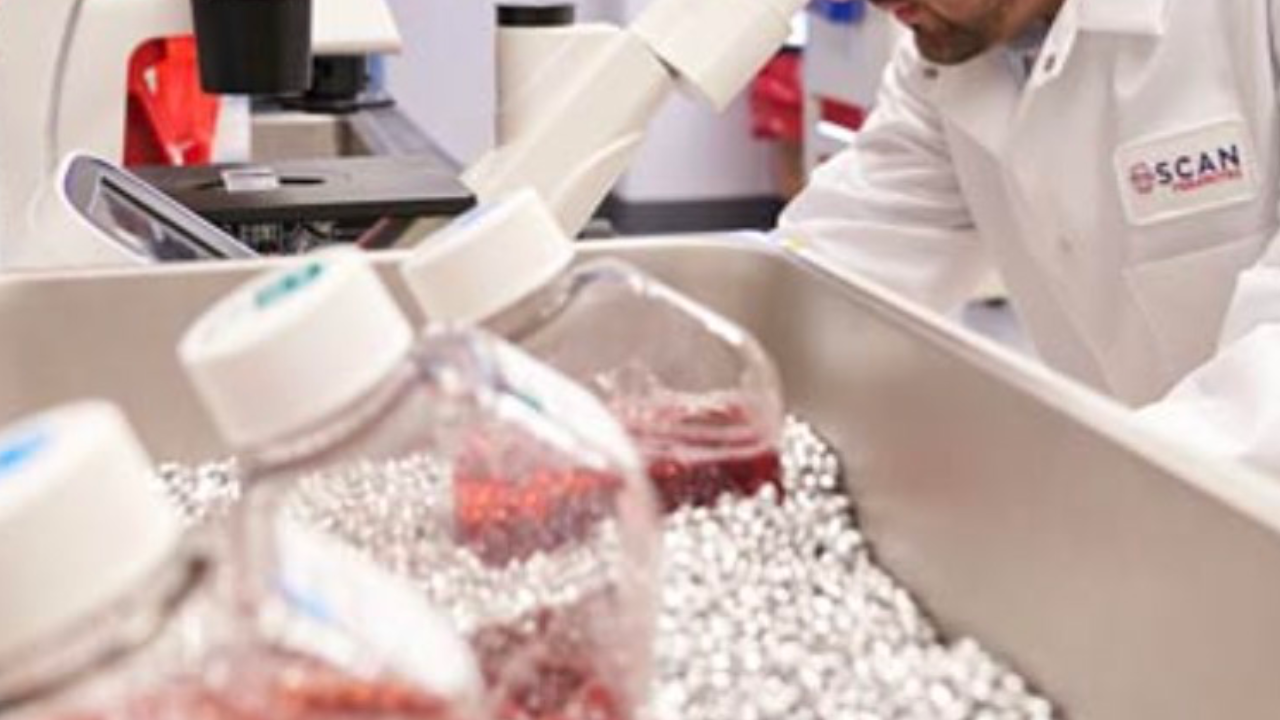Primary IND for solid tumor program,
T-Plex
, supports simultaneous use of multiple TCRs to create customized, multiplexed TCR-T cell therapies based on target and HLA expression
INDs for TSC-204-A0201 and TSC-204-C0702 introduce the first two TCRs into TScan’s ImmunoBank, targeting MAGE-A1 on HLA types A*02:01 and C*07:02, respectively
WALTHAM, MA, USA I January 23, 2023 I
TScan Therapeutics, Inc. (Nasdaq: TCRX), a clinical-stage biopharmaceutical company focused on the development of T cell receptor (TCR)-engineered T cell therapies (TCR-T) for the treatment of patients with cancer, today announced that the U.S. Food and Drug Administration (FDA) has cleared its investigational new drug (IND) applications for T-Plex, TSC-204-A0201, and TSC-204-C0702.
T-Plex will now serve as the primary IND for TScan’s solid tumor program, enabling customized combinations of TCR-Ts to be administered to patients based on the targets and HLAs expressed in their tumors. The specific TCRs for each patient will be chosen from the Company’s ImmunoBank, consisting of high-affinity, naturally occurring TCRs that recognize a variety of prevalent cancer-specific targets and are associated with various common HLA types. Each unique TCR-T will be filed as a secondary IND and will reference the primary T-Plex IND.
In addition to the T-Plex IND, TScan filed secondary INDs for two initial TCR-T products, TSC-204-A0201 and TSC-204-C0702, that target melanoma-associated antigen 1 (MAGE-A1) on HLA types A*02:01 and C*07:02. MAGE-A1 is a cancer-associated antigen overexpressed in 45% of head and neck cancers and 50% of melanoma, cervical, and non-small cell lung cancers. TScan believes that TSC-204-C0702 is the first clinical program in MAGE-A1 for an HLA type other than A*02:01. With these INDs cleared, TScan is now working to open a multicenter Phase 1 clinical trial to establish the safety, preliminary efficacy, and feasibility of repeat dosing of multiplexed TCR-T. The trial will include patients with non-small cell lung cancer, melanoma, head and neck cancer, ovarian cancer, and cervical cancer.
“With the clearance of these three INDs, we believe we are the only company in the cell therapy field to have a clear clinical and regulatory path to develop multiplexed TCR-T cell therapy, which we see as critical for achieving durable responses in patients with solid tumors by overcoming resistance due to target or HLA loss. We will continue to rapidly build out our ImmunoBank, allowing us to deliver customized treatments tailored to each patient’s tumor biology,” said Gavin MacBeath, Ph.D., Chief Scientific and Operations Officer. “We are now engaged in study start-up activities and look forward to sharing initial clinical data for the most advanced TCRs in this program by the end of 2023.”
David P. Southwell, President and Chief Executive Officer continued: “Today marks the first three IND clearances for our solid tumor program and further validates the use of our proprietary platform to identify therapeutic TCRs suitable for clinical development. With the FDA clearance of T-Plex, along with two MAGE-targeting TCRs, we are now one step closer to bringing bespoke cell therapies to patients. We are continuing to build our ImmunoBank, with four more IND filings anticipated in 2023.”
In the Phase 1 trial design, each TCR-T will initially be evaluated as singleplex therapy at two successive dose levels. Once single agent safety is established, each TCR becomes eligible for combination with any other TCR that has passed this threshold. The protocol has an interval 3+3 design, potentially allowing for a rapid path to multiplexing. The trial design also features a screening protocol, which pre-identifies patients whose tumors have a combination of targets and HLAs that would qualify them for the interventional study. The screening protocol is expected to initiate in Q2 2023.
About TScan Therapeutics, Inc.
TScan is a clinical-stage biopharmaceutical company focused on the development of T cell receptor (TCR)-engineered T cell therapies (TCR-T) for the treatment of patients with cancer. The Company’s lead TCR-T therapy candidates, TSC-100 and TSC-101, are in development for the treatment of patients with hematologic malignancies to eliminate residual disease and prevent relapse after allogeneic hematopoietic cell transplantation. The Company is also developing multiplexed TCR-T therapy candidates for the treatment of various solid tumors. The Company has developed and continues to build its ImmunoBank, the Company’s repository of therapeutic TCRs that recognize diverse targets and are associated with multiple HLA types, to provide customized multiplexed TCR-T therapies for patients with a variety of solid tumors.
SOURCE:
TScan Therapeutics







